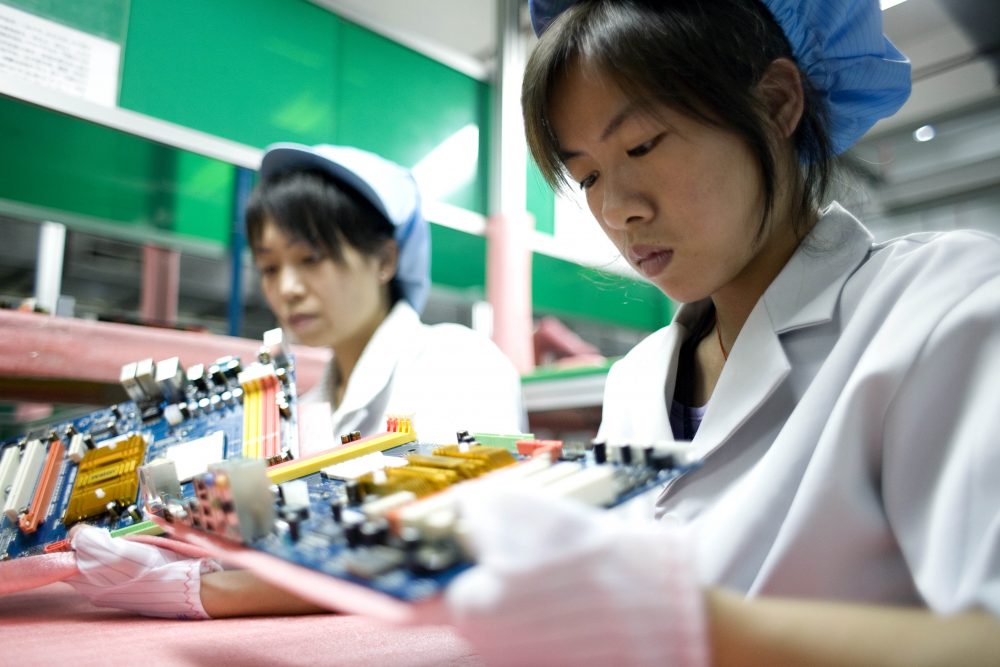Three Steps to Empowering Your Supply Chain on Safety
- July 29, 2017
How often do you think about your health and safety in your work environment? It may depend on your job or whether you’re in an office setting or a manufacturing facility. When it comes to our supply chain, improving the health and safety of the workers and communities where we operate is a priority. In fact, we’re committed to working with our suppliers to build a responsible and resilient supply chain, driving transparency, accountability, and continuous improvement – it’s part of Dell’s Legacy of Good.

Step 1: Understand the Worker Experience
The first step to this goal is developing a deeper understanding of the worker experience in our supply chain. Last year we partnered with a third party to conduct a worker survey at 10 supplier facilities to help us understand workers’ knowledge of occupational health and safety, as well as implementation of our Social and Environmental Responsibility (SER) policies. We received responses from 5,442 workers and compared the results against a benchmark of 60 other suppliers in the electronics industry who also responded to the survey.
In aggregate, our suppliers scored above the median industry benchmark in all of the categories where median scores were available (detailed results can be found in our SER progress report).
Step 2: Build Suppliers’ Capabilities
The next step to address these issues is developing suppliers’ capabilities in this area while building workers’ knowledge and skills. We built a robust capability building program around several topics, one of which is focused on EHS management – and these trainings have already begun to deliver results. Last year, 70% of facilities participating in our EHS training improved job safety analysis, and 64% improved their onsite subcontractor management.
Since these trainings are for supervisors and managers at our supplier sites, we’ve also explored ways to expand trainings directly to the workers. This year we launched a training program through which workers will have access to brief and targeted training courses on health and safety topics such as chemical, machine, and electrical safety via mobile devices. We expect to reach over 20,000 workers and will continue evaluating the impact of these trainings.
Step 3: Go Further
Recent industry research has also shed light on the need for stronger guidelines on chemical management and worker exposure during the manufacturing process. When our team identified this need, our leadership was immediately on board.
We designed a full program around manufacturing process chemicals management and engaged with industry peers to address this in a collaborative manner. We actively participate on the Electronic Industry Citizenship Coalition (EICC) Chemical Management Taskforce and have taken a leadership role as part of Green America’s Clean Electronics Production Network. Through these collaborative efforts, we are working to identify and pilot systemic solutions to reduce worker exposure to harmful chemicals including finding alternative substances for key identified process chemicals, engaging and empowering workers, increasing process chemicals reporting and setting the framework to scale across the industry.
Internally, we also have strengthened our approach to chemical management and worker exposure. We continue tracking supplier certifications to ISO 14001 and OHSAS 18001, and work to ensure suppliers don’t use hazardous chemicals identified in our Manufacturing Restricted Substances List, paying close attention to production processes where workers may be exposed. Additionally, we began collecting chemical inventory data for production processes and screening chemicals using Toxnot, which employs the GreenScreen List Translator approach to identify chemicals of high concern according to GreenScreen* Hazard Criteria.
This year, we also published our Guidelines for Management of Manufacturing Process Chemicals that go beyond regulatory requirements to promote best practices, and we will begin performing spot-checks at supplier facilities to monitor their conformance. Following our continuous improvement approach, we have facilitated both in-person and online trainings on chemical management best practices to help develop supplier capabilities.
Living up to Our Commitment
It is our priority that we operate a responsible supply chain and live up to our commitment through transparency and adherence to the highest standards and policies. As manufacturing processes evolve, we will continue collaborating to explore ways to safeguard worker health and safety and reduce risks through innovating, sharing best practices and developing suppliers’ capabilities across our supply chain. It is important to us, to our customers, and it’s the right thing to do.
————————
Read more about Dell’s work around Social and Environmental Responsibility in our 2017 Supply Chain SER Progress Report
* GreenScreen was developed by the nonprofit Clean Production Action.